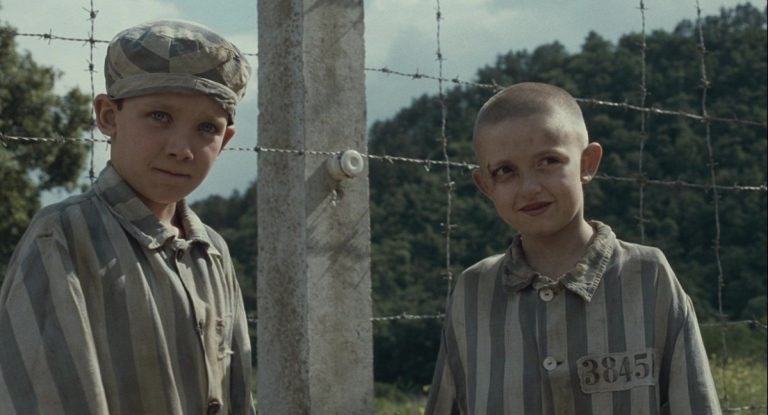
Four Spanish Book-to-Film Adaptations That You Need to Watch
28 January, 2022In this article we will briefly look at some of the most notable and influential Spanish adaptations of novels, both ancient and modern (According to me). A good movie adds a kind of emotion or feeling to the world that just cannot exist without it. It is not the story that interests me, nor is it what is happening on-screen.
Adapting a book to the screen involves more than just writing the book. Is it easy?
The answer is No! It is about getting the story right, ensuring it is interesting, giving it pace and feeling real. onlinecasinosnoop.com has looked at some of the highest book-to-film adaptations of all times and no wonder it has all the well-known adaptations in it. The fact that the viewer is left with an impression that is influenced by the Culture is just astonishing. It is easy to see why so many filmmakers go to Spain and many Spaniards end up liking and watching Spanish films.
Below are my recommendations for best 4 Book-to-film adaptations
Good Night and Good Luck
Not many American films can claim to be considered as political in a progressive way as Good Night and Good Luck (directed by Robert Benton), but this Oscar-winning film starring Philip Seymour Hoffman and Meryl Streep, has a very Spanish feel to it. The film focuses on two American journalists investigating the mysterious suicide of a war correspondent. What the journalists discover is an almost unbelievable journey through both their personal and professional lives that is tied to a cause that reflects the tumultuous sociopolitical situation in Spain at the time.
El libro de la selva (The Jungle Book)
Manuel Muñoz – Oriol Paulo, 2010 Sebastian Fognini – Bruno Barreto, 2011. The above two film adaptations of The Jungle Book share the same director and share the same voice cast, as well as the same setting. While in Muñoz’s version the animals speak a mix of Spanish and Catalan (the official languages of Catalonia), Fognini’s makes use of authentic Spanish words and phrases. It’s a cultural mix that has worked well for the book, so it makes sense that a film adaptation of it would also work for the cinema. The way that the movie director works with the culture and dialogue of the English version and the cultural heritage of the Spanish language is the same way that its author uses the narrative of the story to speak about identity and community in Spain.
La guerra del fin del mundo (War of the Worlds)
One of the biggest science fiction blockbuster films ever made in Spain was War of the Worlds (2001) directed by Álex de la Iglesia. The Spanish movie tells the story of the invasion of Earth by Martians. The film is based on the H.G. Wells’ short story published in the magazine The Strand in 1899. This film was a huge commercial success, grossing over a billion dollars worldwide. The success of the movie led to the production of a sequel of the same name directed by Steven Spielberg in 2005, which was a massive financial and critical success. Spanish director José Luis Borau is responsible for Caminos con pelo largo (Wild Pigeon), a great 1950s Spanish comedy movie starring a very young Fernando Rey.
Cinco días sin Nora (Nora’s Will)
This 1977 version of Luis Buñuel’s 1962 film adaptation of Don Quixote, which will find itself a subject of further discussion, first and foremost, is amazing to see on the big screen. Despite having the largest budget in Spanish film history and the best stars in María Julia Sagardoy and Eduardo Cofré, Cinco Días Sin Nora loses much of the romantic complexity that made the original film one of the greats of Spanish film history. Still, the filmmakers do a good job of incorporating characteristic Spanish characteristics, like an impudent humour, contrasts in language and clothing, and the modernist architecture of Madrid, all with the imposing setting of an early twentieth-century sanatorium.
Last one: El niño con el pijama de rayas (The Boy in the Striped Pajamas)
A subtle, powerful film, The Boy in the Striped Pajamas dramatizes the life of young, Jewish boy, Bruno, in the German-occupied Netherlands. In the opening scene, the young boy is trying to hide his striped pajamas from the curious eyes of a German officer, who notices them right away. A storm is raging outside, and young Bruno runs outside in an attempt to catch a glimpse of the storm. He finds himself on a beach, and a soldier coming towards him, knocks him into the water and leaves him to die. The scene and its music play simultaneously, and the tones of the movie change abruptly. The soldier is a man who is very different from the Germans that have oppressed the people.
Follow Sounds and Colours: Facebook / Twitter / Instagram / Mixcloud / Soundcloud / Bandcamp
Subscribe to the Sounds and Colours Newsletter for regular updates, news and competitions bringing the best of Latin American culture direct to your Inbox.

